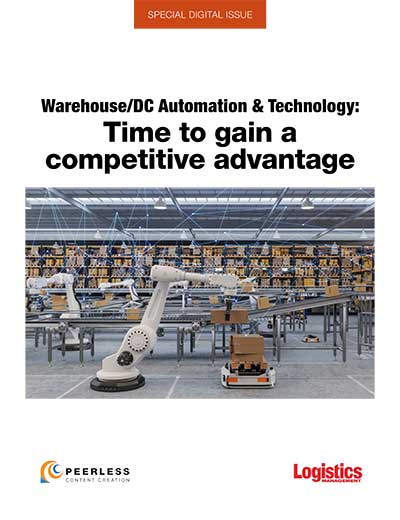E-commerce: Balancing new patterns of demand
Once again, we’re using the March issue of Logistics Management to take a closer look at how the ongoing growth of e-commerce continues to influence the various modes, services and operations practices that make our logistics and freight transportation networks function.
We charged industry veteran—and soon to be monthly columnist—Brooks Bentz with gathering a group of top freight transportation analysts to help us encapsulate where we are across the modes in the wake of this unyielding growth.
“It’s safe to say we’re getting used to managing on a field that’s continually shifting on us,” says Bentz. “And that’s good because it has forced savvy logistics professionals to innovate, be it with packaging or simply in the way they optimize how they manage the capacity that they already have. The challenge of balancing these new patterns of demand has pushed us to get better and apply new systems—all positive signs for the future.”
As Bentz reports, more positive signals will continue to flash as more companies figure out the best fulfillment model to fit their operations. “There’s a large proliferation of fulfillment centers, generally smaller and closer to customers,” says Bentz. “However, most progressive retailers will balance these flows and use distributed order management algorithms to allocate orders across their supply chain in a way that balances inventory position, logistics cost and proximity to the customer.”
And while the pandemic forced the hand of many to put new innovations to work, a fact that’s being applauded, it has only enlarged the specter that many still refuse to face: reverse logistics. “It’s the ugly head rising out of the mist of the pandemic,” says Bentz.
According to the National Retail Federation, 17% of retail orders are returned, with peaks as high as 30% during holiday peak season. “That’s hard to believe,” says Bentz. “Coupled with the need to manually inspect and classify returns and refresh packaging, the current cost model is unsustainable.”
For years we’ve drawn attention to the importance of establishing and investing in a proactive reverse logistics process that moves toward automating this extremely expensive and labor-consuming exercise. In fact, many analysts we’ve worked with over the years still call it the biggest “missed opportunity” in business.
Starting on page 36, Accenture’s Herman Guzman-Carranza offers LM readers a few steps they can take on the way to transforming their approach to reverse. What I like best about his take is that he’s pushing logistics operations to think more holistically and embrace the concept of the “circular economy”—or the creation of a closed loop where waste is eliminated and resource efficiency is maximized.
“In its current application, the circular economy has manifested as an approach by companies to use and reuse products with the goal of creating more resilient and sustainable supply chains,” says Guzman-Carranza. “For example, forward-looking fashion brands have committed to closed-loop programs in apparel, enabling shoppers to send their used garments off for recycling as well as clothing rental services to minimize the carbon footprint.”
Guzman-Carranza offers practical suggestions to establish much-needed reverse logistics capabilities. “Understanding the end-to-end reverse logistics cost, processes and operating model can affect how end-to-end supply chain processes are designed,” he adds.













